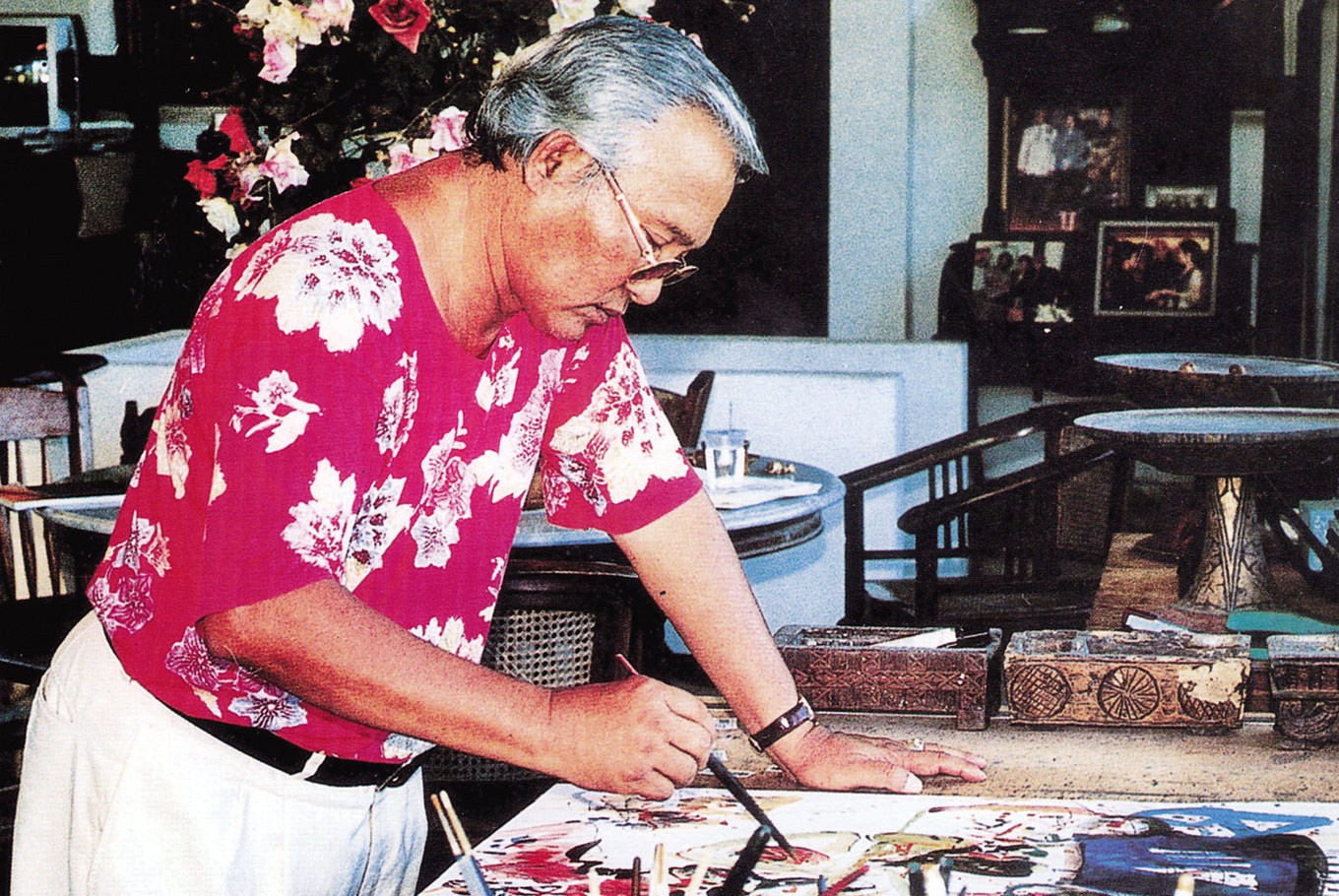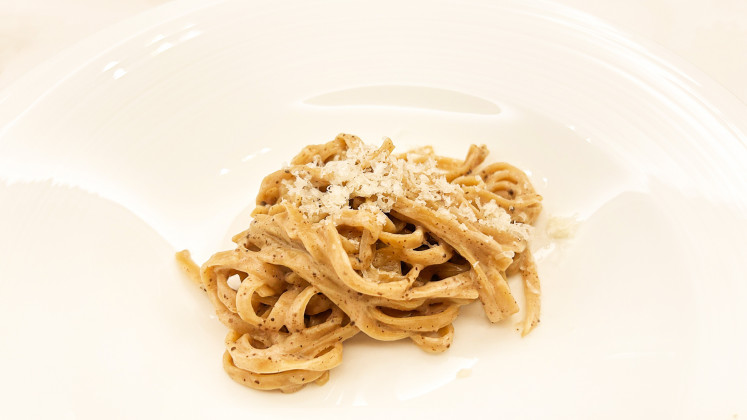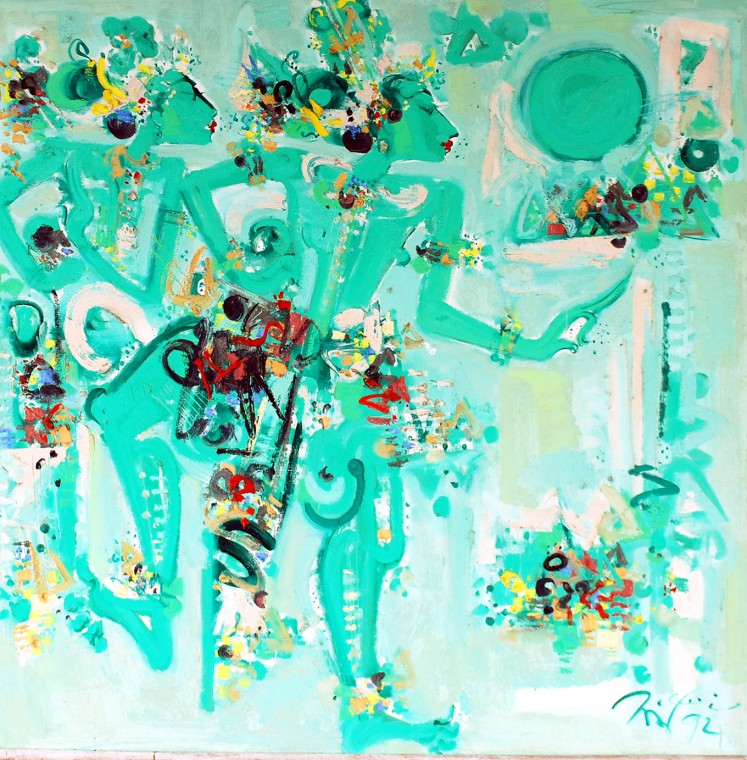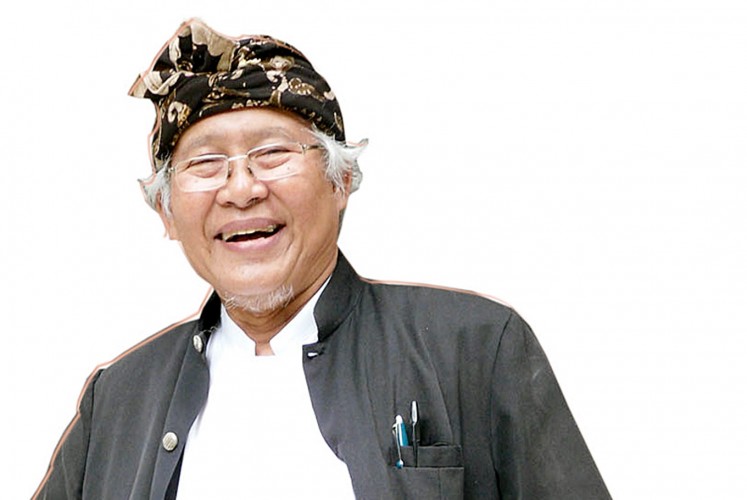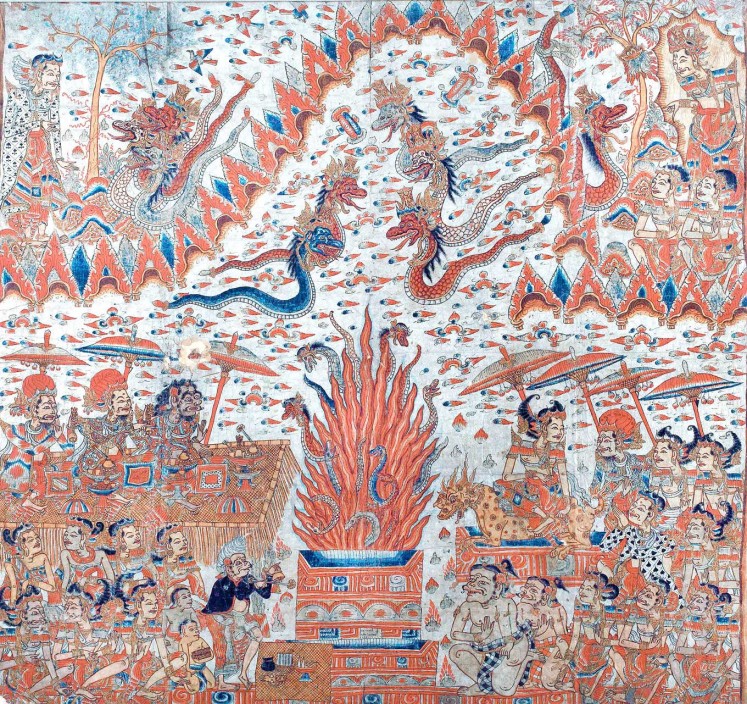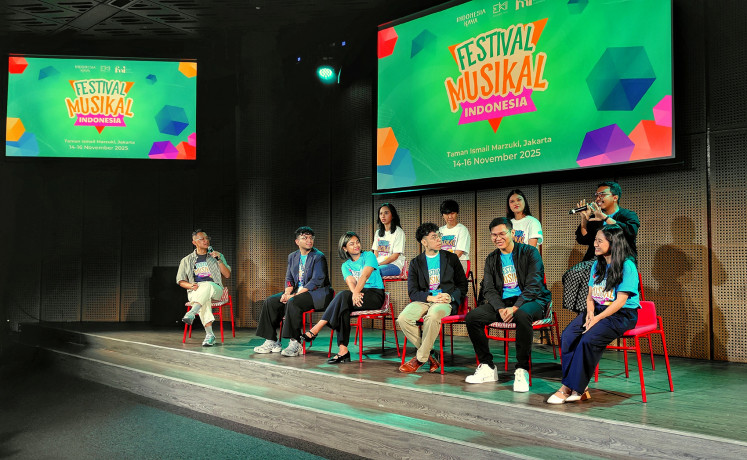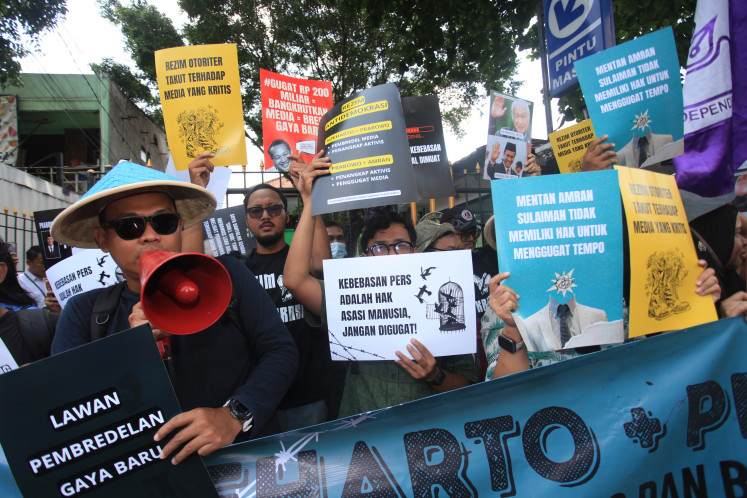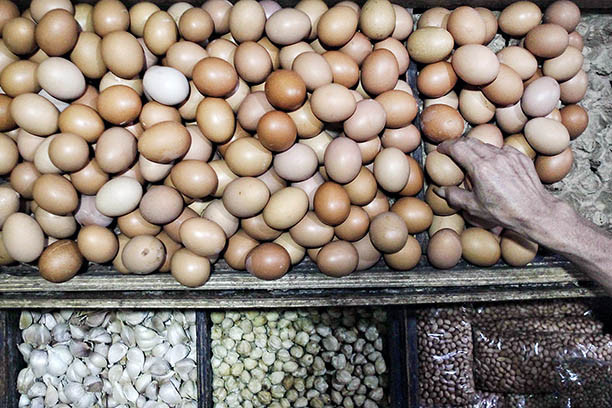Popular Reads
Top Results
Can't find what you're looking for?
View all search resultsPopular Reads
Top Results
Can't find what you're looking for?
View all search resultsAdieu maestro: Bali bids farewell to influential visual artist
Change text size
Gift Premium Articles
to Anyone
T
here are individuals who possess such a magnificent level of energy — a mesmerizing enthusiasm for life — that they exude an aura of immortality. Nyoman Gunarsa was one of them.
Naturally, when news of his passing on Sunday at a Denpasar hospital spread through social media, most of his friends received it with a sense of disbelief.
“He had always been the exuberant and optimistic one. He had been hospitalized several times in the past and the experiences had never broken him, instead he had always come out stronger and more determined,” art professor I Made Bandem said.
Bandem and Gunarsa were close friends and belonged to the same post-Independence generation of Balinese intellectuals. This was the generation that survived the country’s economic hardships and deadly political turmoil before rising to become the primary force that shaped the island’s cultural landscape.
Bandem is a renowned dancer and ethnomusicologist who oversaw the transformation of Denpasar’s Institute of Indonesian Art (ISI) into a powerful cultural establishment while Gunarsa was a famed painter and university lecturer who cofounded Sanggar Dewata Indonesia (SDI), arguably one of the most influential artists’ associations in the history of the island.
Token of respect: This painting of Rama and Laksmana, the two protagonists in the Hindu epic Ramayana, was gifted by I Nyoman Gunarsa to his friend, art professor I Made Bandem. (Made Bandem/File)
“His personal esthetic achievement as a painter and his tireless work through the SDI were some of his important contributions to the development of Balinese visual art,” Bandem said.
Personal esthetic achievement was the main reason behind Gunarsa’s success on both national and international stages, an accomplishment that only a few Balinese artists of his generation, including Made Wianta, could attain. Both Gunarsa and Wianta were applauded by art critics for their refreshingly individual and modern takes on elements and themes borrowed from the Balinese traditional fine-art realm.
While Wianta later immersed himself in the pursuit of perfect geometry, Gunarsa established a personal style that would later earn him fame, wealth, and lead to innumerable forgeries.
The style combined iconic figures and decorative elements from the island’s myths and lore with elongated torsos, vivid colors and bold, minimalistic strokes. The pervading atmosphere was usually of buoyant optimism, a case of artwork capturing the character of its creator.
This style secured his place as one of the island’s most important visual artists in the 20th century. Yet, it was his teaching years in Yogyakarta’s ISI and his work with the SDI that won him a special place in the hearts of scores of young Balinese artists.
“That was a very politicized period,” Gunarsa recalled the time in 1970, when the country was still reeling from the brutal communist purge in 1965 and there was constant pressure on artists to take a political side.
“I and several other Balinese artists founded the SDI to provide Balinese students and artists living in Yogyakarta a platform to share, collaborate and create without having to fear being labeled as supporters of certain political parties,”
Joie de vivre: A wide smile and optimistic attitude were I Nyoman Gunarsa's signature traits. (Nyoman Gunarsa Museum (NGM)/File)
The SDI grew into arguably the largest and longest-surviving Balinese artists association, celebrating its 46th anniversary through a major art exhibition last March in Yogyakarta. A large number of the island’s up-and-coming visual artists are members of this association.
“What made him so unique was the fact that he also dedicated his energy and attention to the preservation of Balinese art from the classical era,” another gigantic figure in Balinese art, Pande Wayan Sutedja Neka said.
Neka, who founded the Neka Art Museum in Ubud, said that Gunarsa’s decision to build in the 1990s a museum for the preservation of Balinese classical paintings had truly amazed him.
“I mean, he was already a wealthy person at that time and building a museum would certainly cost a fortune. The fact that he did it and put his whole heart into it really touched my heart,” Neka added.
Historic: Sarpa Yadnya (the snake sacrifice) is one of the precious Kamasan-style paintings on display at the Nyoman Gunarsa Museum. (Nyoman Gunarsa Museum (NGM)/File)
Gunarsa’s home village of Banda, where the Nyoman Gunarsa Museum is situated, is only a few kilometers from Gelgel, the seat of the 15th century Balinese kingdom of the same name. It was said that the island experienced a cultural renaissance during the reign of Dalem Waturenggong, the most important king of the Gelgel. The king provided generous support to artisans and artists residing in Kamasan, a village near Gelgel. This patronage would play a pivotal role in the emergence of Kamasan-style painting.
Gunarsa was in love with this style and spent considerable sums of money to acquire rare Kamasan-style paintings, including ones painted on rare ulantaga bark paper. The three-story museum also hosts historic wooden pavilions, gamelan sets, wooden gates and wall reliefs, statues and traditional kris daggers.
“He was a creator, a teacher and a conserver […] a role model whose contributions will be forever enshrined in our collective memory,” Neka said.
Gunarsa is survived by his wife, three children, seven grandchildren and countless number of young aspiring artists who looked up to him as a source of inspiration. A ngaben cremation ceremony will be held for him on Sept. 30.

